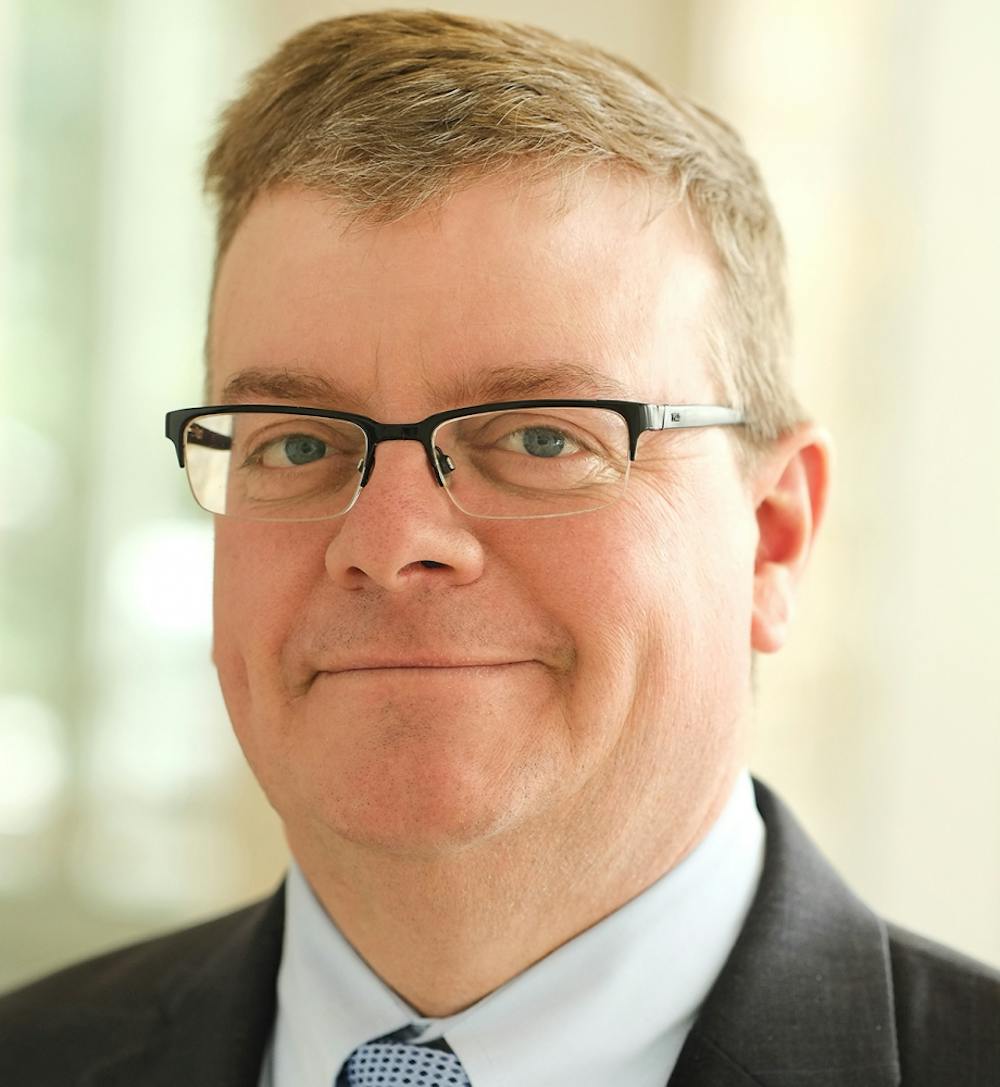College treasurer David Provost explained why Middlebury has a smaller endowment and provides less financial aid than many of its peers, and described how the college is working to improve on both fronts, in a presentation on Jan. 24 in Dana Auditorium.
Introduced by SGA liaison to student endowment affairs Will Dowling ’18, Provost addressed topics such as the previous college deficit and the relationship between college endowment and student financial aid. The presentation, which was followed by a brief Q&A segment, was a co-effort by the SGA and the finance office and part of the “How Midd Works” series.
Provost began his presentation by introducing the basics of the college endowment. Middlebury’s endowment reached $1.074 billion at the end of fiscal year 2017. Although it is up $74 million from the previous year, Middlebury’s endowment is overshadowed by its peers; Williams, Amherst and Wellesley each hold endowment sizes double that of Middlebury, at $2.568 billion, $2.248 billion and $1.97 billion respectively.
Bowdoin holds an endowment of $1.46 billion. In 2011, the two institutions had nearly identical endowments at $900 million. What accounts for the almost forty percent gap today?
Provost suggests that the difference is the result of poor operating budgeting. Between 2011 and 2016, total operating expenses increased at an average of 4.18 percent annually. However, net fees only increased at an average rate of 2.52 percent annually. In order to fill the gap between revenue and expenditure, funds were drawn from the corpus of the endowment.
Middlebury has since worked toward a solution to achieving financial sustainability. In fiscal year 2017, the college made significant budget changes to combat its deficit trend. Net fees increased by 3.5 percent, generating $151 million in revenue. Expenses, on the other hand, decreased by 1.4 percent — the first drop in nearly ten years. With the current plan in place, Provost estimates that the college will be able to reach operational surplus or neutrality by 2021.
Financial aid is also closely tied in with the endowment, as 20 percent of endowment usage of funds is funneled toward scholarships. Currently, 44 percent of students receive financial aid, and the average aid package is $47,000. Twenty-five percent of the total financial aid budget — nearly $13 million — is funded from the endowment and expendable funds.
Still, Middlebury lags behind its peers in providing financial aid. In 2016, Amherst, Williams and Pomona each offered grants to 50 to 60 percent of students, with an average grant of $50,000 to $55,000.
But Provost said Laurie Patton, Middlebury’s president, is looking to push the college’s financial aid program into the same competitive range as its peers. As a new cycle of fundraising is beginning, Patton may tailor the campaign to fit the theme of need.
Ultimately, Provost believes that his role is not solely to manage finances, but also to realize the college’s education mission. During the Q&A segment, Provost was asked why the college’s endowment was managed by Investure rather than in-house, in comparison to institutions such as Harvard and Williams.
“We could (bring endowment management in-house). However, I believe firmly that it is not core to who we are, that is not why we exist. That is not our mission and purpose — to be exceptional at investing our money. There are people who do that,” Provost said.
“We need to challenge ourselves on everything that we do: is it meeting [Middlebury’s] objective? When we decide to do things, spend money or invest in things, is it core to what a Middlebury education represents to its students?”
Treasurer Tells All in Endowment Forum

Comments



